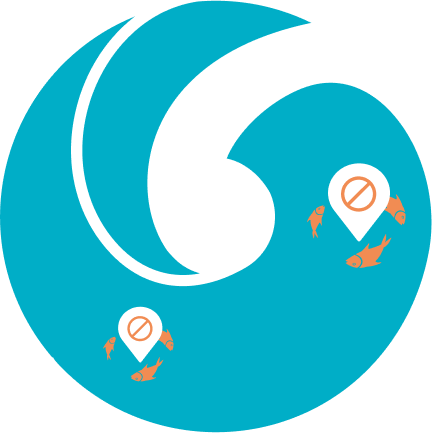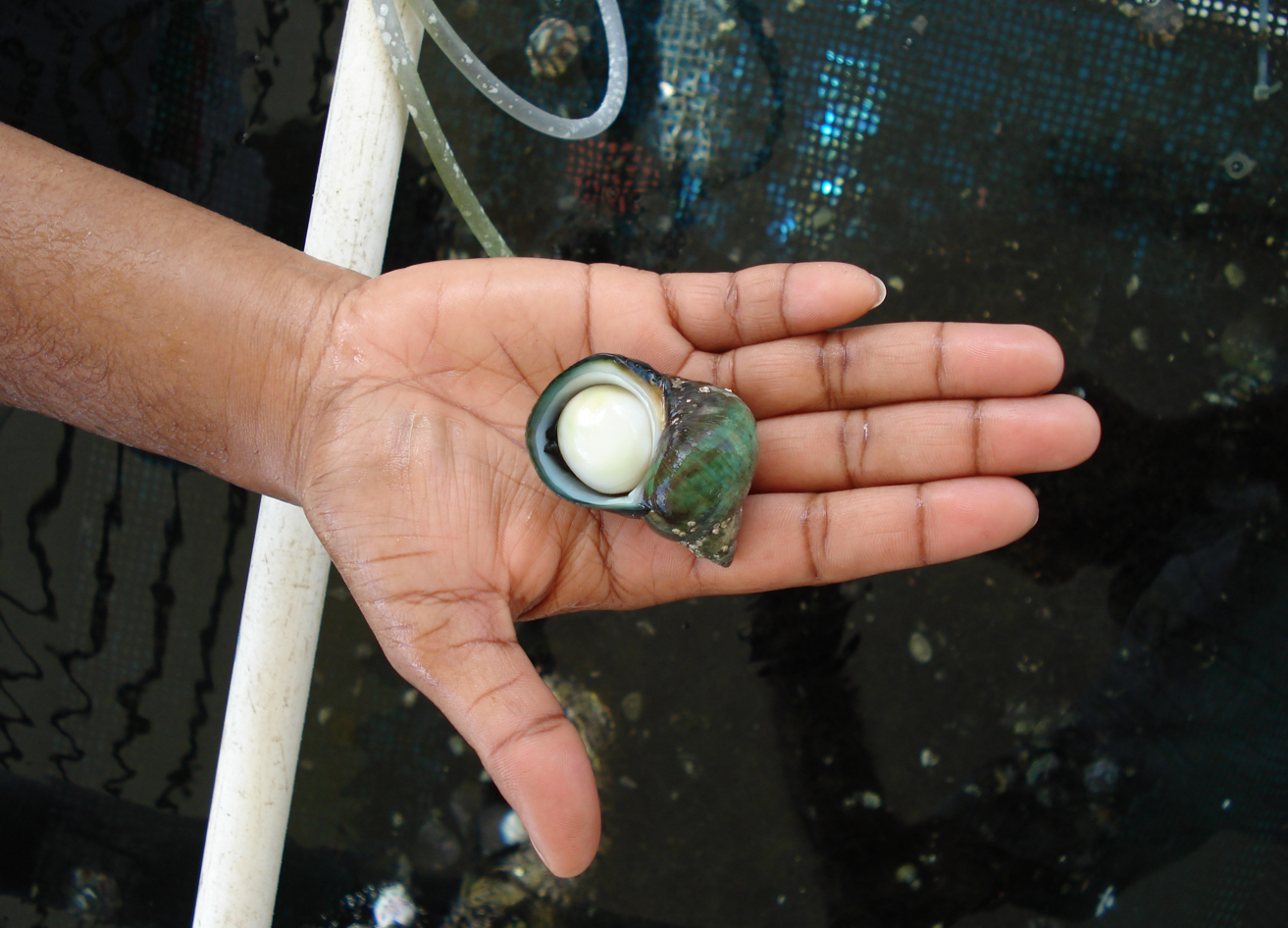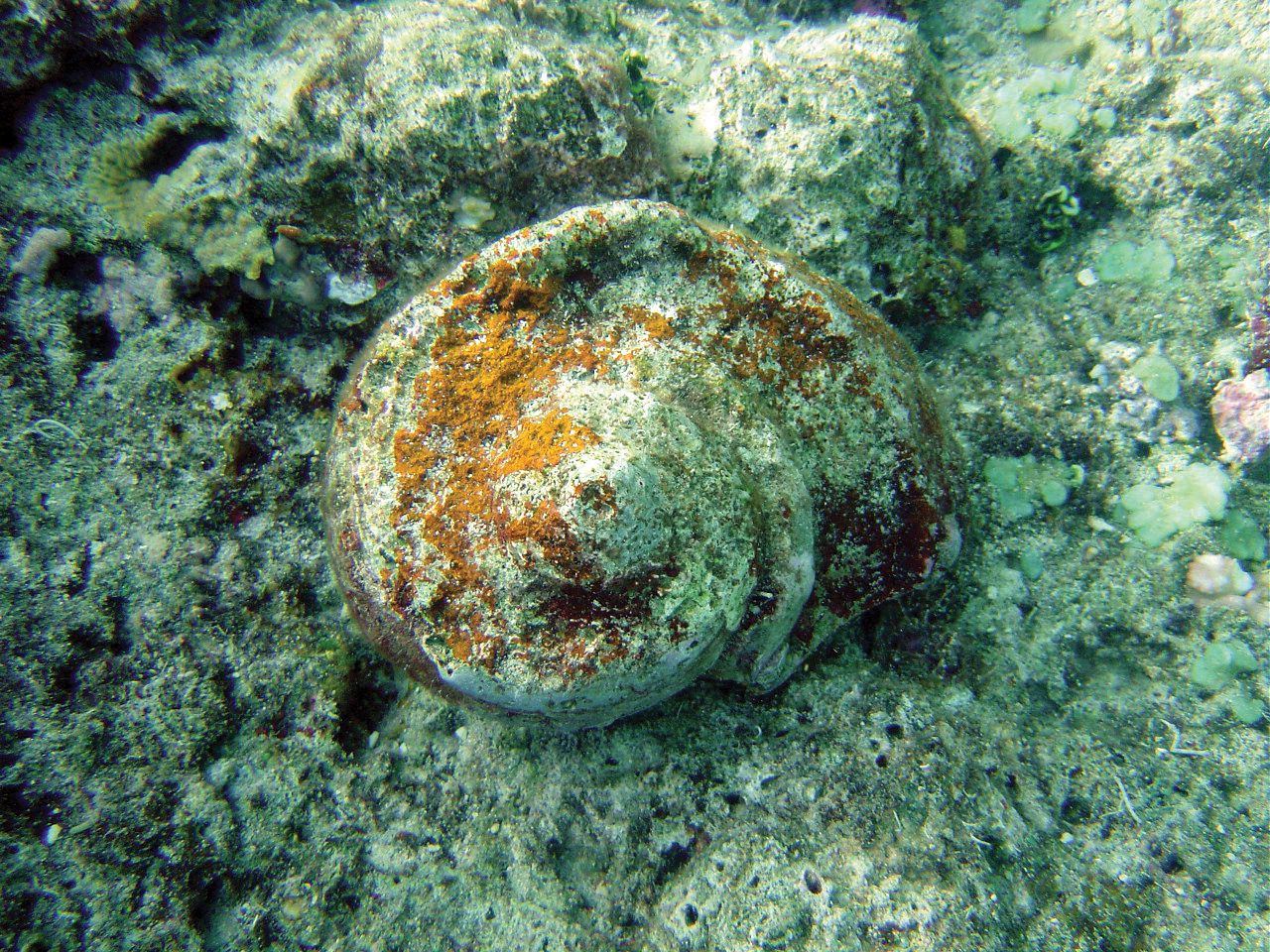Image: © Antoine Teitelbaum, SPC
To gain access to full information on green snails, download the information sheet produced by the LMMA Network and SPC.
If you have noticed a decline in your catches or are concerned about green snail populations, here are some priority actions the community can consider in addition to national regulations:
Fish smart rules
Fishing bans
Placing and enforcing a ban on the collecting of green snails in the local fishing area. Any closure would have to be for several years to allow time for stocks to recover and for adults to breed;


Tabu areas
Establishing a permanent marine reserve (no-take area) in an area where there are adult green snails (or where green snails can be introduced). The expectation is that adults in the reserve will grow and reproduce. Due to the very short time that small green snails (the larvae) drift in the sea, juveniles may settle both within the reserve and in nearby down-current areas.
If existing stocks of green snails are healthy, or once stocks have recovered, the following management measures can be taken to ensure that collecting green snails is sustainable:
Temporary bans
Establishing rotational harvesting, in which a community fishing area is divided into a number of smaller areas that are fished in rotation. If there were five smaller areas, each area would have four years protection from being fished and this may allow green snail stocks to rebuild and reproduce;


Quotas
Establishing a community quota (or annual bag limit). Fisheries authorities could assist communities by conducting a preseason survey to estimate the number of green snails over a minimum size in each area. The community quota (the total number of green snails allowed to be taken) could then be set at 40 per cent of the number of legal sized snails present; if there is no national minimum size, a community could apply a minimum size of 140 mm shell width.
Fishing methods
Green snails are usually taken by free diving or snorkelling and wading on the reefs at low tide. Unfortunately, the use of underwater breathing apparatus has been responsible for removing nearly all green snails in many areas. Fisheries for green snails have collapsed in several Melanesian countries.
Management measures in the region
Many fisheries authorities have applied minimum size limits (often within the range 130 to 150 mm shell width) with the intention of allowing individuals to breed at least once before capture. The use of underwater breathing apparatus for collecting green snails has been banned in many countries. This measure may provide some protection for larger reproducing snails living in deeper water and these may breed and repopulate shallower areas.
These regulations are of little use in many areas where green snails have disappeared due to heavy fishing. Some countries have banned fishing for green snails for periods of up to 15 years to allow populations to recover. Due to the high value of green snails, many communities have difficulty protecting green snails from commercial operators.
The green snail or turban, Turbo marmoratus, is a large sea snail that grows up to 2 kg. It has a heavy shell and a large lid or operculum (sometimes called a “cat’s eye”), which can close off the opening of the shell when the snail is disturbed or attacked. Green snails are harvested for their meat and their pearly shells, which are sold to processing factories for making buttons, jewellery and pearl inlays.
The natural distribution of green snails is from the Indian Ocean through Southeast Asia to the Pacific Ocean as far as Vanuatu. However, they have been transplanted to the east as far as Tonga and French Polynesia.
Green snails prefer the surf zones and reef slopes on coral reefs. Juvenile green snails hide in crevices and holes. Adults move around at night to feed on plants (red and green algae). They are eaten by many animals including crabs, mantis shrimps, other sea snails, octopuses and large fish.
Green snails have separate sexes and are able to reproduce at a shell width of about 130 to 150 mm and an age of about 4 years. In cooler areas, green snails appear to breed in the summer months but, in warmer areas, they breed throughout the year.
During reproduction, each female releases millions of eggs into the sea and these are fertilised by sperm released by the males. Although heavier than seawater, the eggs may be carried by sea currents over considerable distances. The fertilised eggs develop into very small forms (the larval stages) that drift in the sea. Less than one in every thousand survives to settle on the sea floor as a shelled juvenile within 3 to 5 days. And less than one in every hundred juveniles survives to become an adult.
Related resources

To gain access to full information on green snails, download the information sheet

